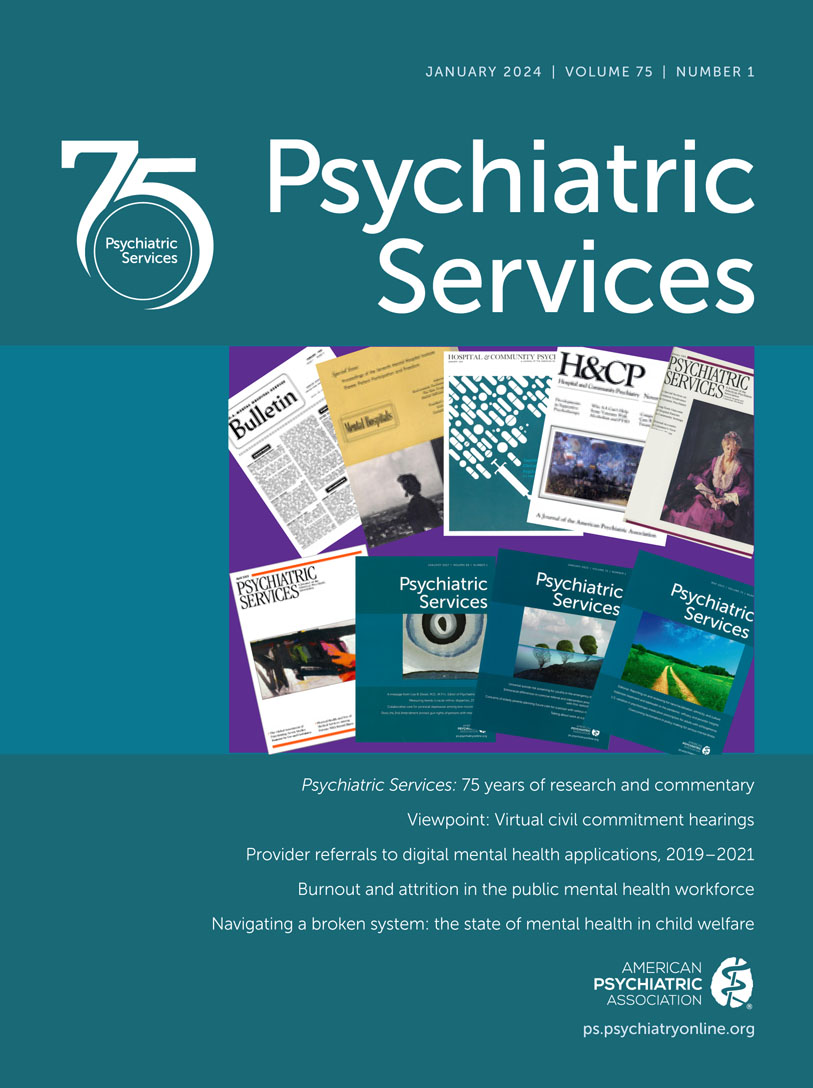Correction to Shields et al. (2021)
In a research letter published online November 4, 2021 (“Characteristics and Financing of Institutions of Mental Diseases” by Morgan C. Shields, Ph.D., et al., Vol. 72, No. 11, pp. 1359–1360; doi: 10.1176/appi.ps.202100320), the authors described characteristics of and differences between institutions of mental disease (IMDs) on the basis of receipt of Medicaid Disproportionate Share Hospital (DSH) payments in 2015. To accomplish this analysis, the authors merged two data sets: Medicaid state-plan-rate-year reports in 2015 and Provider of Service (POS) files. While using the POS data for adjacent projects, the authors realized that the rates reported in their 2021 letter included hospitals considered “inactive” by Medicare, resulting in an inflated number of IMDs in their analysis (1,112 originally reported). Although facility characteristics associated with receipt of DSH payments were qualitatively unchanged after facilities marked as no longer active in the POS were excluded, the recalculations based on the revised total of 496 IMDs changed some of the results. The percentage of IMDs receiving Medicaid DSH payments rose from 13% (original) to 28% (recalculated). Of the remaining facilities, a majority provide outpatient care and treat geriatric patients but do not treat children or forensic patients. In addition to being for-profit, the facilities provide substance use disorder treatment, participate in Medicaid, and comply with conditions of participation, as reported in the original letter. While lessened, the findings that for-profit IMDs were less likely (odds ratio [OR]=0.46, p=0.04) and government-owned IMDs more likely (OR=3.33, p<0.001) than nonprofit facilities to receive DSH payments remained significant, as did the greater likelihood that IMDs treating forensic patients received DSH payments (OR=4.42, p=0.003). A new finding from the recalculation was that facilities in the top 20% of bed volume were more likely to receive DSH payments (OR=7.03, p<0.001). An updated supplement showing the characteristics associated with acceptance of DSH payments among IMDs was posted online on November 28, 2023. The corrected paragraphs are indicated below, and the 2021 letter has been corrected to reflect these updated analyses, excluding facilities marked as no longer active in the POS.
Among this national sample of 496 IMDs, the majority were for-profit, located in urban areas, provided substance use disorder treatment, participated in Medicaid, provides outpatient care, treats geriatric patients, and were compliant with conditions of participation (see the online supplement). Most did not treat children/adolescents or forensic patients.
Over a quarter (N=137, 28%) of IMDs received Medicaid DSH payments. After analyses adjusted for characteristics and state fixed effects, government owned IMDs were more likely (OR=4.23, p=0.004) than nonprofit facilities to receive DSH payments. IMDs that treated forensic patients were also more likely to receive DSH payments (OR=4.42, p=0.003), as well as facilities in the top 20% of bed volume (OR=7.03, p<0.001).
In addition, the byline incorrectly listed the second author’s name; the correct byline is Morgan C. Shields, Ph.D., Mara A. G. Hollander, Ph.D., Steven C. Marcus, Ph.D., and Paula Chatterjee, M.D., M.P.H.



